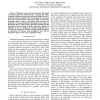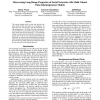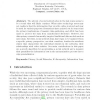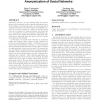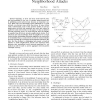109
click to vote
SOCIALCOM
2010
14 years 10 months ago
2010
This paper proposes that social network data should be assumed public but treated private. Assuming this rather confusing requirement means that anonymity models such as kanonymity...
109
Voted
ICWSM
2010
15 years 2 months ago
2010
The spread of influence among individuals in a social network can be naturally modeled in a probabilistic framework, but it is challenging to reason about differences between vari...
96
Voted
AAAI
2010
15 years 2 months ago
2010
The current methods used to mine and analyze temporal social network data make two assumptions: all edges have the same strength, and all parameters are time-homogeneous. We show ...
111
click to vote
INCDM
2010
Springer
15 years 4 months ago
2010
Springer
This paper reports on a mechanism to identify temporal spatial trends in social networks. The trends of interest are defined in terms of the occurrence frequency of time stamped p...
135
click to vote
KDD
2008
ACM
16 years 1 months ago
2008
ACM
The advent of social network sites in the last years seems to be a trend that will likely continue. What naive technology users may not realize is that the information they provide...
120
Voted
CCS
2009
ACM
16 years 1 months ago
2009
ACM
Knowledge discovery on social network data can uncover latent social trends and produce valuable findings that benefit the welfare of the general public. A growing amount of resea...
210
click to vote
ICDE
2008
IEEE
16 years 2 months ago
2008
IEEE
Recently, as more and more social network data has been published in one way or another, preserving privacy in publishing social network data becomes an important concern. With som...
